America's Beloved Outer Banks Could Be Devastated In The Next Century
The Outer Banks could be devastated in the next 50-100 years as rising sea levels threaten to sweep away the 200-mile-long string of barrier islands off the North Carolina coast.

A 2010 North Carolina report warned that local sea levels could rise as much as 55 inches by the end of the century if no major actions are taken to curtail climate change.

Even the base line scenario for rising sea levels would flood beachfront roads and homes and devastate the tourism and real estate industries. Here, a beachfront home on the eroded shoreline tilts on its supports.
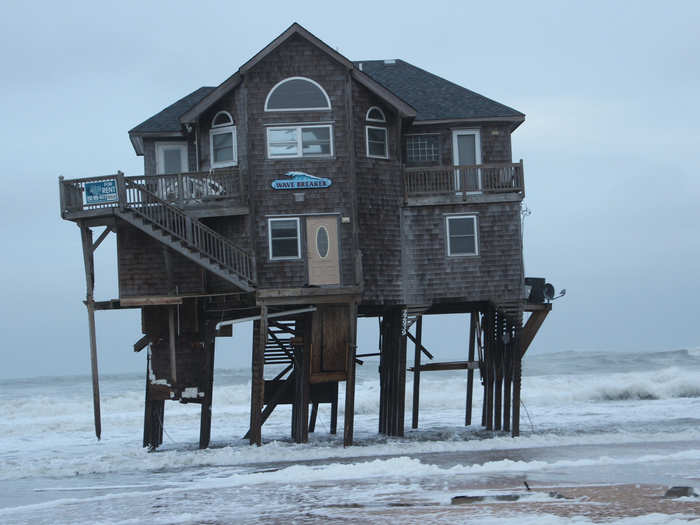
This map, from the US Geological Survey, shows how vulnerable different parts of the North Carolina coast are to sea level change. The red areas have very high vulnerability, and the orange areas have high vulnerability.
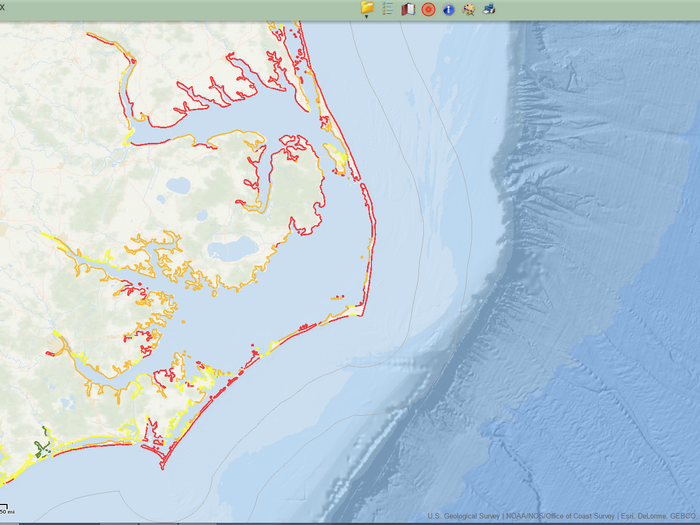
Source: US Geological Survey
Here's a projection of what Cape Hatteras would look like after a 3-foot sea-level rise. Darker blue areas show deeper water — and those lighter blue areas show land that is currently above sea level but would be underwater.
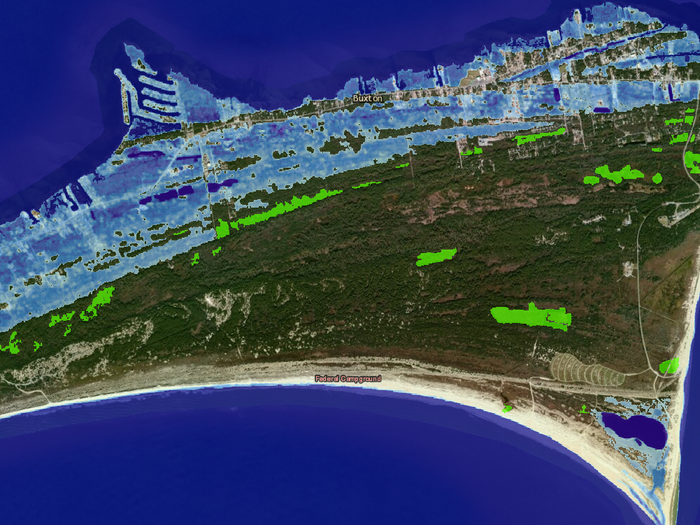
Source: NOAA Sea Level Rise Viewer
This will be Kitty Hawk, the famed site of the Wright Brothers' first flight, after three feet of sea-level rise.
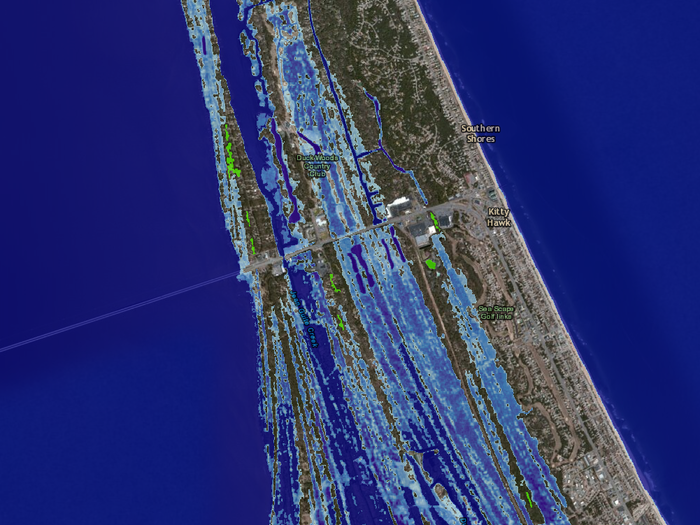
Source: NOAA Sea Level Rise Viewer
A three-foot sea-level rise could displace more than 5,000 people and flood approximately 6,000 homes.
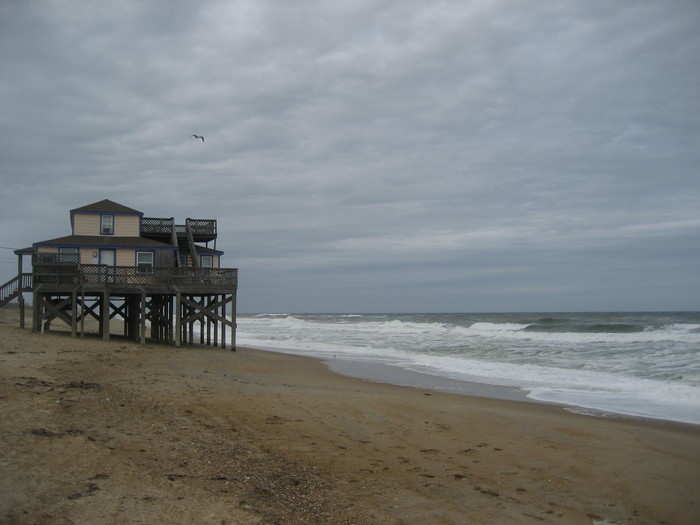
In addition to swamping the islands, sea-level rise could seep into coastal aquifers and contaminate drinking water.
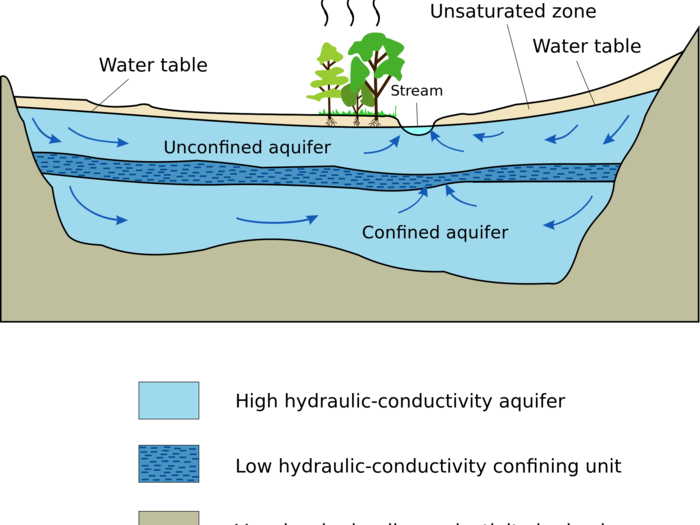
And sea-level rise isn't the only climate-related issue the islands are facing.
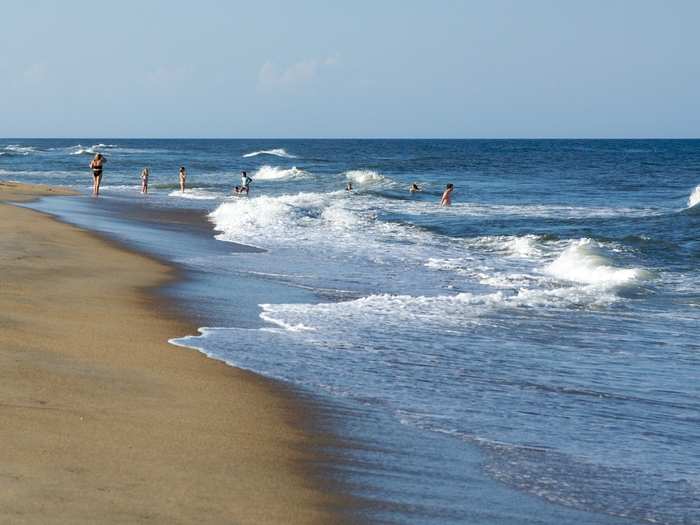
Another widespread effect of climate change is an increase in heavy precipitation events. The Intergovernmental Panel on Climate Change reports that the frequency and intensity of these events has increased in North America.
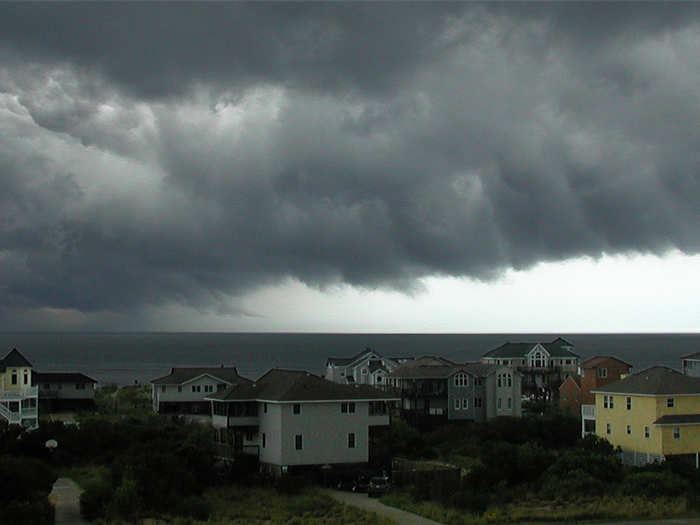
Storms exacerbate coastal erosion, and storm surge — the moving water that builds up in front of an incoming storm — hits barrier islands the hardest. An increase in storms off the Carolina coast could speed up the erosion already happening as a result of sea level rise.
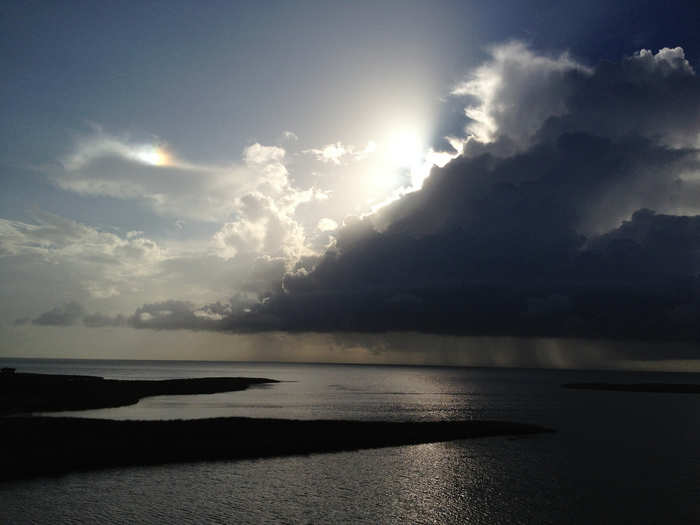
Source: The Battle for North Carolina's Coast: Evolutionary History, Present Crisis and Vision for the Future, by Stanley R. Riggs, Dorothea Ames, and Stephen Culver
The Outer Banks have gotten a taste of the ocean's power the past few years with a series of hurricanes. Hurricane Irene (2011), Hurricane Sandy (2012), and Hurricane Arthur (2014) all brought winds, rains, and floodwaters surging through the islands.
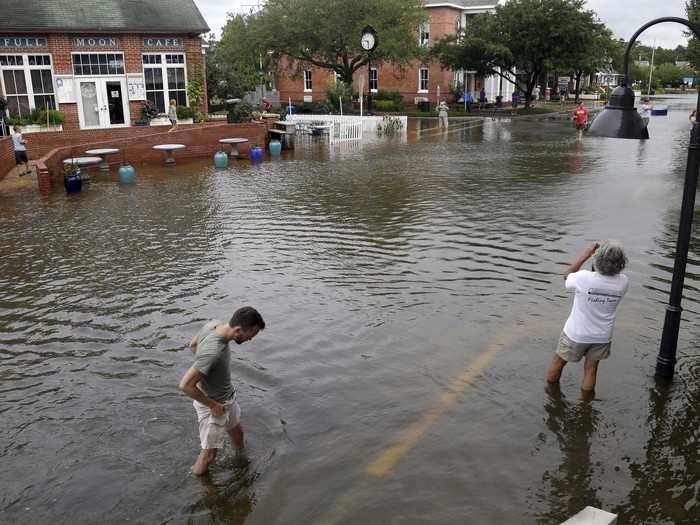
Temperatures will rise as well. This chart shows projections for annual average temperatures in the Southeast US through the end of the century. In a higher emissions scenario — a situation in which humans fail to curb greenhouse gas emissions — annual averages could leap into the 70s.
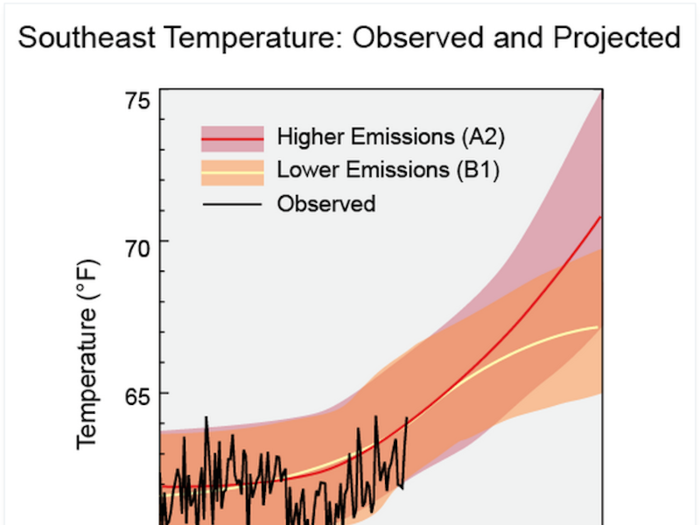
Source: US Global Change Research Program, Climate Change Impacts in the United States: The Third National Climate Assessment
And the coastal waters are also getting warmer, bringing changes in fish populations. Tropical species, like the invasive lionfish, could become more common as the North Carolina waters continue to warm.

And fish won't be the only wildlife affected. The Audubon Society released a report this year concluding that more than half of North America's birds are threatened by climate change.
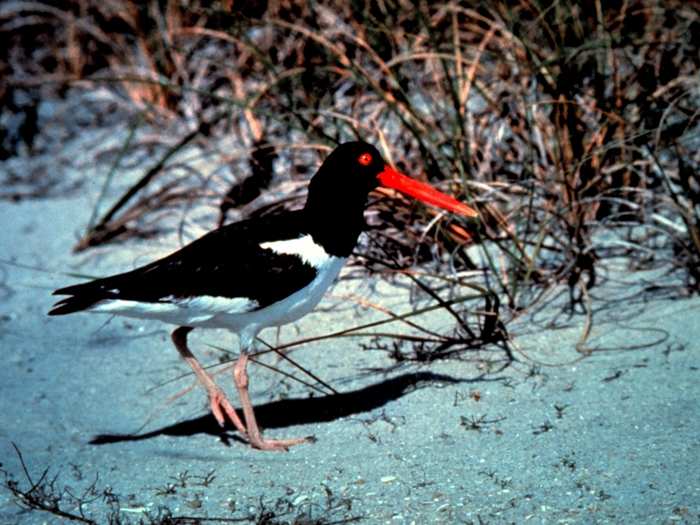
American oystercatchers, piping plovers, dunlins, black skimmers, and brown pelicans are just a few of the coastal birds who are losing habitat to climate change.
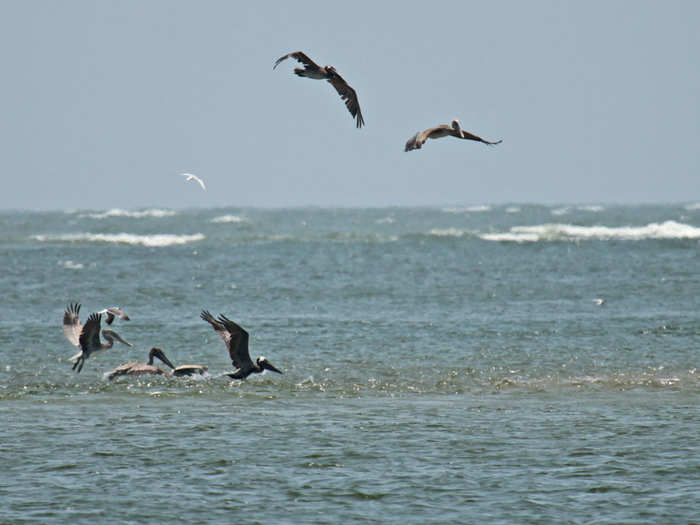
Sea turtles could suffer too, as rising sea levels sweep away the beaches where they lay their eggs year after year.
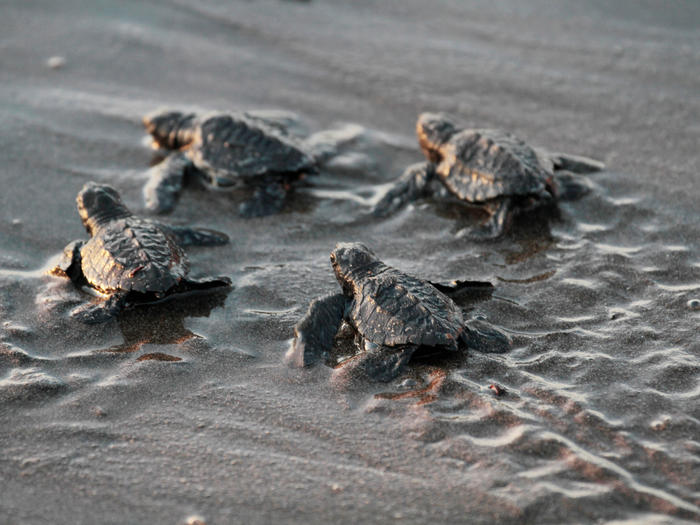
Source: Sea Turtle Conservancy
Left to their own devices, barrier islands are able to erode and rebuild through a process called washover, in which waves sweep over the island, pulling sand away from the beach face and depositing it further inland. But manmade structures on the Outer Banks, like roads and bridges, impede this natural process, meaning eroded sand doesn't get redeposited the way it should.
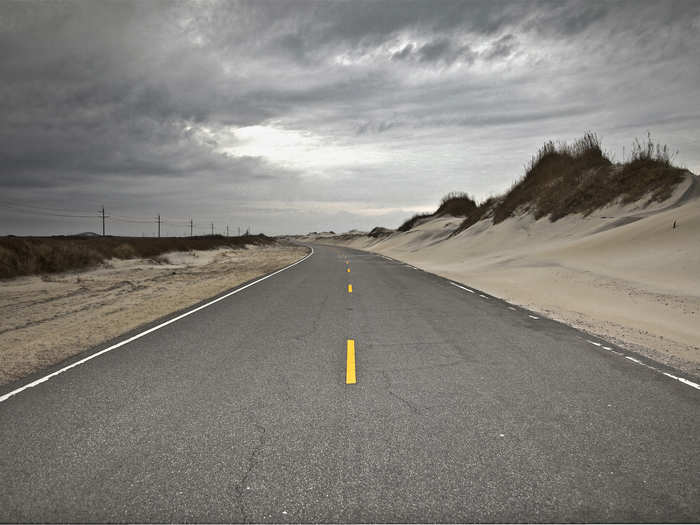
Source: The Battle for North Carolina's Coast: Evolutionary History, Present Crisis and Vision for the Future, by Stanley R. Riggs, Dorothea Ames, and Stephen Culver
To combat erosion, many coastal communities use "hard structures" like jetties to hold the beach in place. But these structures can actually cause increased erosion further down the beach, and North Carolina has had a ban on these structures since 1985.
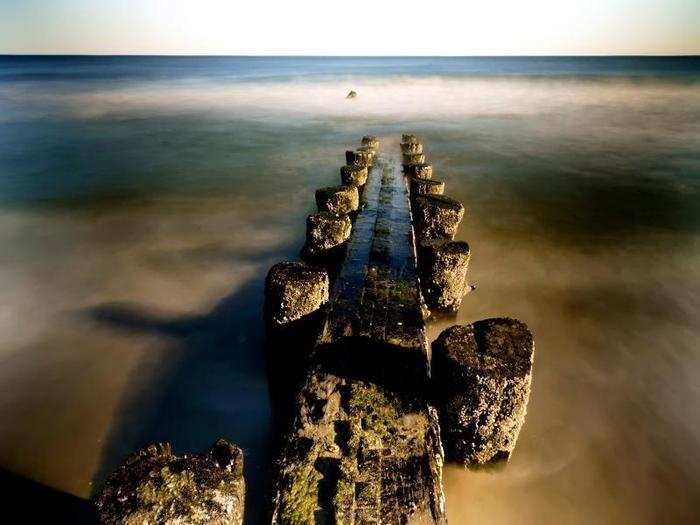
North Carolina has relied more often on beach nourishment — trucking in sand to rebuild eroded beaches — to try to fight back against the encroaching sea.
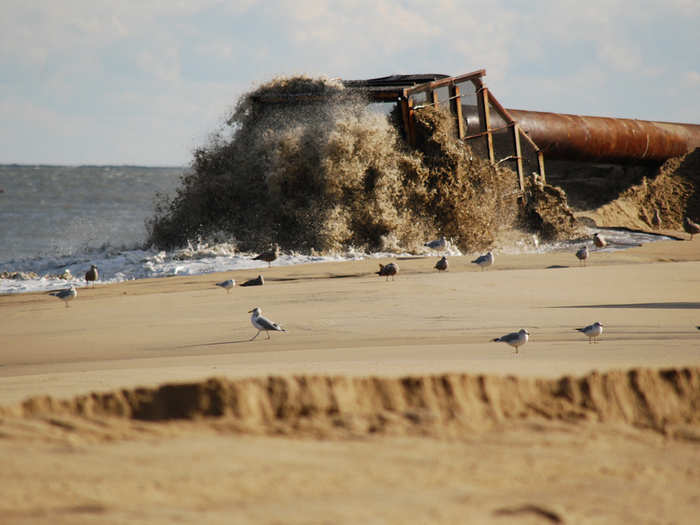
Source: The Battle for North Carolina's Coast: Evolutionary History, Present Crisis and Vision for the Future, by Stanley R. Riggs, Dorothea Ames, and Stephen Culver
But whether these kinds of projects offer a sustainable longterm solution remains debatable. Beach nourishment is expensive, and large quantities of beach-compatible sand can be hard to come by and costly to access.
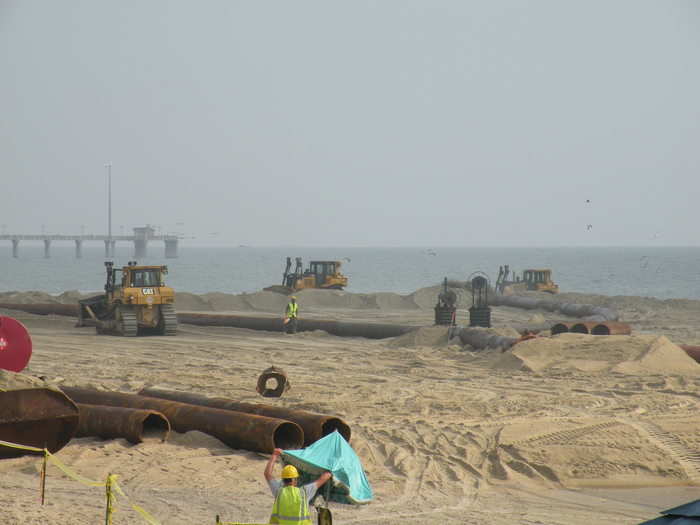
Source: The Battle for North Carolina's Coast: Evolutionary History, Present Crisis and Vision for the Future, by Stanley R. Riggs, Dorothea Ames, and Stephen Culver
For now, North Carolina isn't even designing its coastal policies with accelerated sea-level rise in mind. The news from the 2010 sea level report was upsetting to coastal residents and climate skeptics, who pressured the state government to kill the report.
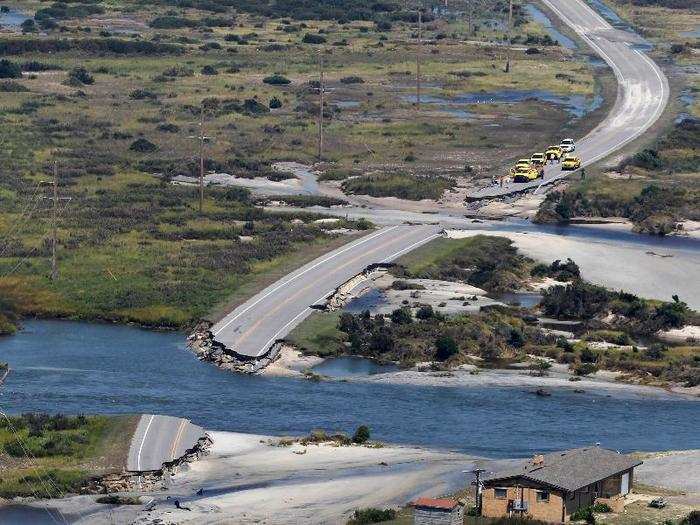
Source: NC-20
In 2012, the state responded by placing a four-year moratorium, good through 2016, on using the sea level projections to create policies for coastal communities.
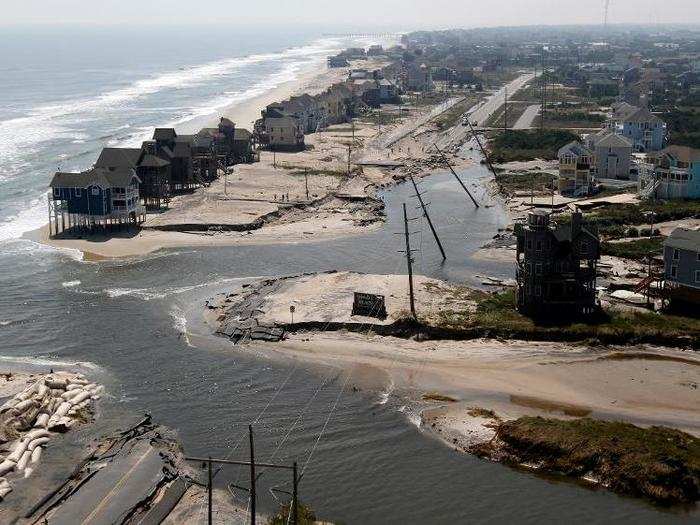
Source: North Carolina House Bill 819
The NC Coastal Resources Commission has asked the Science Panel to write another report with a projection for only the next 30 years — a limited timeline that fails to convey the true dangers of sea level rise in the state. The new report will be released next year.
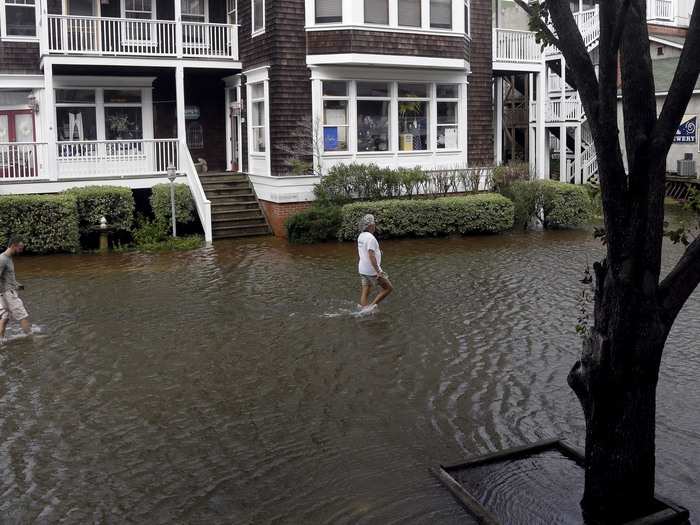
It's no wonder some residents want to keep the bad news quiet — tourism is the number one industry in the Outer Banks, according to the Outer Banks Chamber of Commerce. In fact, tourist spending set a record in 2012, generating $19.4 billion for North Carolina.
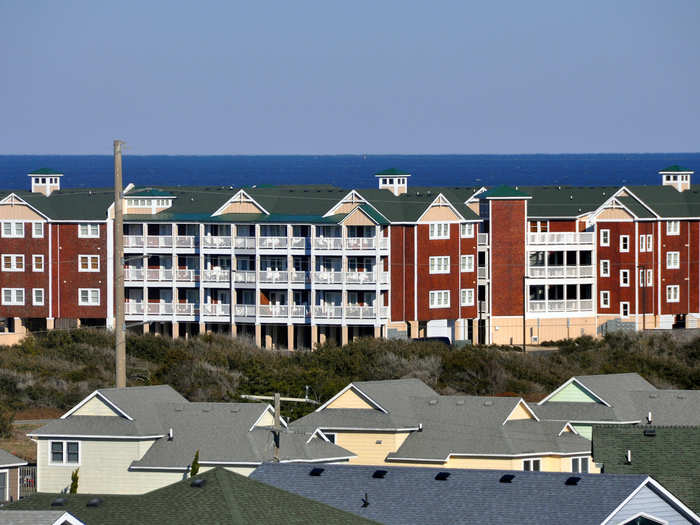
Source: Outer Banks Chamber of Commerce
And homes on the Outer Banks can go for upwards of $3 million — a price that will surely plummet once buyers realize that prime beachfront property may soon be a prime flood zone.
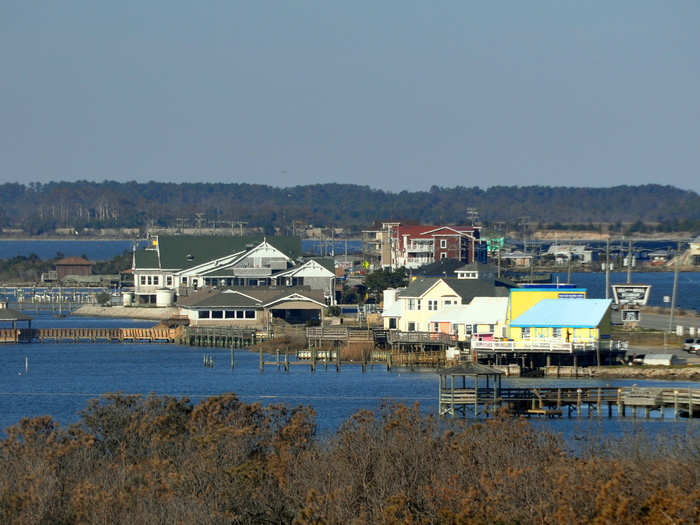
In the absence of a successful maintenance plan, the islands will likely continue to grow narrower as the ocean rises ever higher. In fact, some areas of the islands have already narrowed by 50 to 75 percent over the past 150 years.
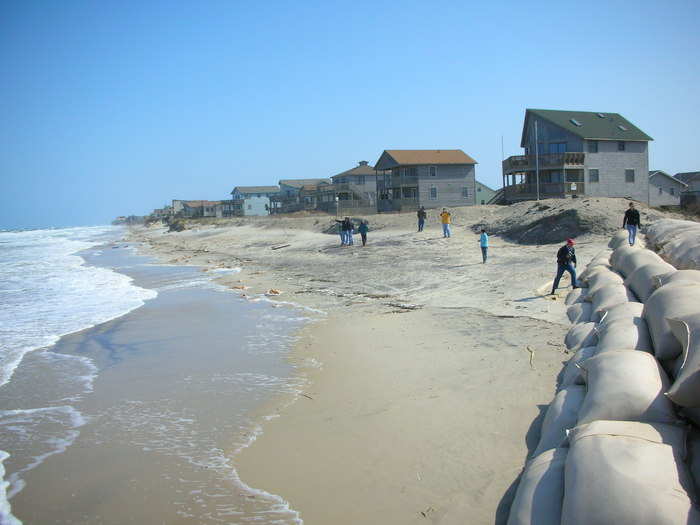
Source: The Battle for North Carolina's Coast: Evolutionary History, Present Crisis and Vision for the Future, by Stanley R. Riggs, Dorothea Ames, and Stephen Culver
With the effects of climate change looming and no clear long-term solutions on the horizon, the future of the Outer Banks also remains a question.
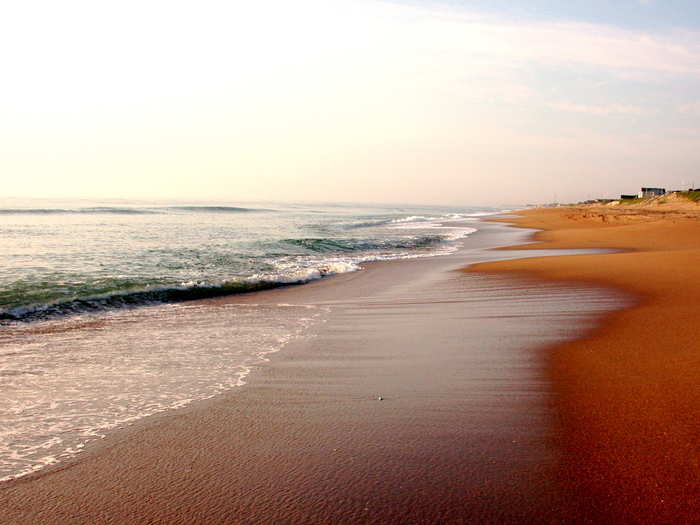
The Outer Banks isn't the only tourist mecca in trouble.
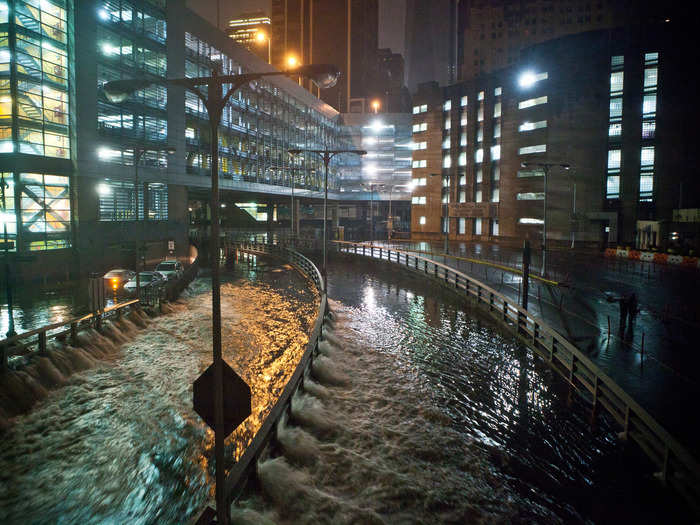
Popular Right Now
Advertisement